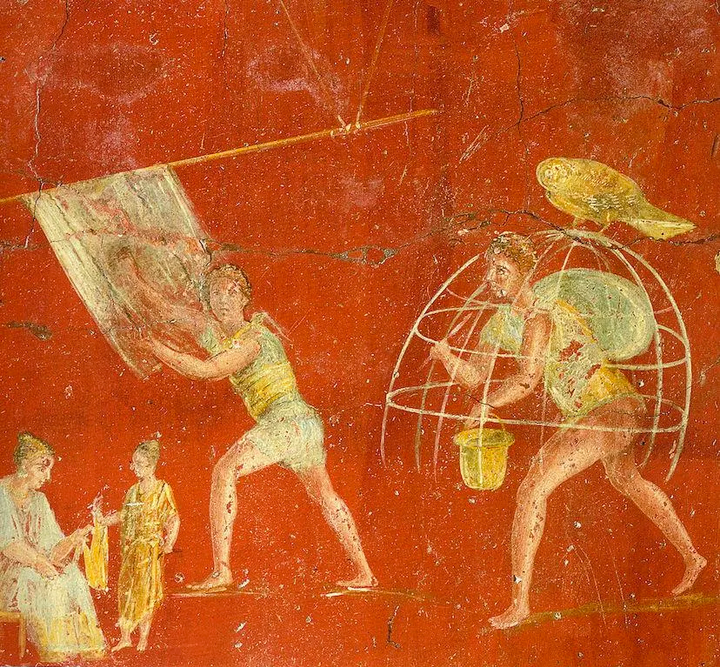The colour red has had a wide variety of meanings and purposes throughout human history. The earliest use of red in the archaeological record comes from cave paintings drawn over thirty thousand years ago. Early humans used a naturally occurring pigment made of a mix of iron oxide and clay, now known as red ochre, to create imaginative paintings of the animals they saw in their daily lives. Red ochre may have even held a religious significance, forming part of early rituals and burials from the Stone Age onwards. Some archaeologists believe that red ochre represented the life-giving qualities of Mother Earth.
Ancient Egyptians saw red as the colour of Set, the god of storms and the colour of anger and chaos. The phrase ‘Red Place’ in Egyptian is thought to be the root of the modern English word for ‘desert’, but red also represented protection. Mummies were often buried with red amulets to provide them with the protection of Isis. For the Ancient Greeks, red was a masculine colour closely connected to Ares and Phobos, the gods of war and fear. Ancient Romans saw red similarly, associating it with Mars, their god of war. Soldiers wore red and generals wore bright crimson cloaks, painting themselves red after a successful battle.
By this point, new ways to create pigments had been discovered. Red lead, for example, was one of the first artificially produced pigments still in use today and is thought to have been first made by the Ancient Greeks and Romans. They melted and oxidised a mineral called minium to produce an artificial red pigment. Whilst red lead itself is still used today, it is no longer manufactured due to its toxicity and tendency to change colour over time.

Vermillion is also thought to have been invented by the Ancient Greeks and Romans. Production of the natural dye involves washing and heating cinnabar to create a powdered pigment, while water artists used a slightly altered method to produce a wet version, an artificial production process was invented in the 8th century. Production largely ceased in the 19th century after the invention of cadmium red.
Metallic cadmium was discovered by Stromeyer in 1817, and a yellow pigment was first created a few years later. Pigments involved the processing of the metal with sulphur, and darker pigments tended to last longer. Cadmium red became commercially available in 1919 and has been in use since then. But by the 19th century, red had a new meaning: rebellion. In 1791, King Louis XVI of France attempted to flee the country in a failed escape known as the ‘Flight to Varennes.’
Revolutionary groups wrote a petition for the abolition of the monarchy, encouraging citizens of Paris to sign it. A large group gathered to sign the petition, but a red flag was raised as an order of dispersal. The National Guard began to shoot into the crowd, killing 50 citizens, the red flag was then claimed as a symbol of martyrdom and revolution. Red has also been closely linked to love and marriage. For many cultures, it is the traditional colour of a bride’s wedding outfit. Roman brides wore a red shawl representative of their fertility and love for their new husbands.
Chinese brides wear red dresses at traditional weddings, as a symbol of good luck at the beginning of a new marriage. Hindu brides dress in red saris, as red symbolises sexuality and purity. In fact, protective Hindu deities or those believed to destroy evil are often portrayed as wearing red to highlight that aspect of their identities. Red is a symbol of good fortune and luck in Chinese culture. Red envelopes containing money are traditionally given at important celebrations to spread good fortune.
In South Korea, red symbolises respect and good health. Children give paper red carnations to their parents on Parents’ Day on the 8th of May every year, these are pinned to the left side of the chest and act as a symbol of parents’ hard work.
In Western society, red is the colour of love, passion and anger. Studies even show that people are perceived to be more attractive when wearing red. Given the complexities of red’s history and how it has evolved over time, this mixed modern image makes perfect sense.






















